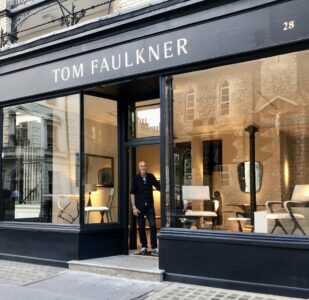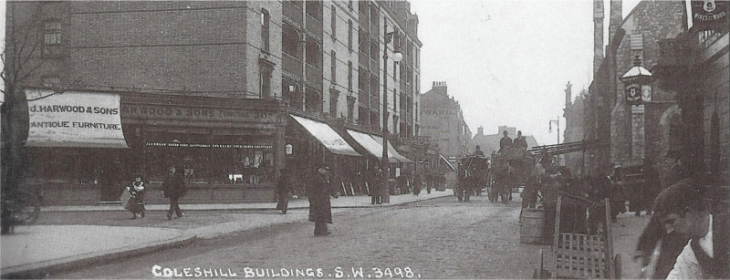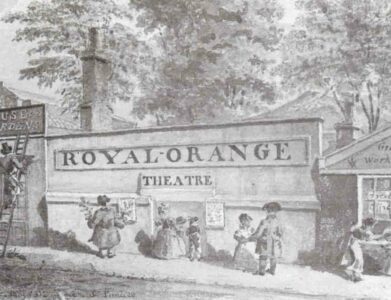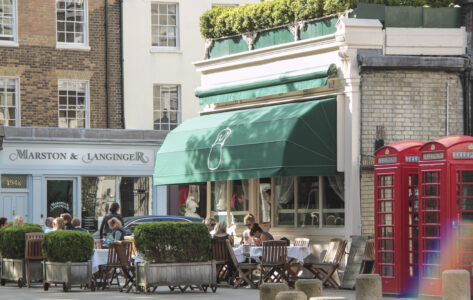Our past few months have been animated by an introduction to the home of British design: Pimlico Road. We’re delighted to have officially opened the doors of our new shop at number 28 just this week – and have been thrilled by the warm welcome we’ve received. As we get to know our new locale, we encounter all kinds of intriguing historical crumbs along the way. To satisfy our curiosity, we did a bit of digging on just how Pimlico Road came to be the design destination it is today…
Pimlico Road (counter to what its name may suggest) is actually part of Belgravia. During the Middle Ages the area was known as the ‘Five Fields’, alluding to its rural character. It was accessed by Bloody Bridge, so called due to the high incidence of highwaymen operating in the area by night. It was also a popular spot for duelling, as it was an easy area to slink off to from the City, proper.
These rough and tumble beginnings gave way to a more gentile feel in the early 19th century. This is when Richard Grosvenor, 2nd Marquess of Westminster set out to develop the land with architectural direction from Thomas Cubitt. That’s when we begin to see the neighbourhood’s characteristic terraced houses emerging, putting a fresh, residential face on the area. Eaton Square is a great example of this new character, which cemented the place as one of London’s most covetable neighbourhoods.
A creative and culturally curious flare began to set in. Artist, Aubrey Beardsley moved in just near Pimlico Road. Mozart even lived around the corner from our new shop, with writer and Bloomsbury satellite, Vita Sackville West later moving in right next door. As Belgravia began to draw a more cosmopolitan crowd, it developed a metropolitan feel with shops to serve these elevated tastes. The first came in the form of an antique shop, Ossowski. It’s a family-run collection of decorative delights that’s still operating out of the neighbourhood today. This drew others in the design world to set up studios and shops, offering fabrics, furniture, rugs, paints – all the ingredients of a considered interior.
Veterans of the area, like those at Jamb and Colefax & Fowler, note the raffish allure of late 20th-century Pimlico Road. It was a hodgepodge of eccentric decorative dealers. The street was lined with cars, boots flung open to display an eclectic mixture of wares. From its energetic, if charmingly shambolic beginnings, it grew into a more ordered mode of creativity. The contents of car boots were transferred into shop windows; signs were painted; flowers were planted. Today we see the product of a natural evolution, moving towards a curated compendium of British creativity.
Pimlico Road continues to evolve, while retaining its spirit of community, craft, and creativity. It’s set up to invite visitors beyond the shopfront, encouraging an exploratory approach to design and craft. Much of what you’ll find here is made in the UK, with a close connection between workshop and design shop. This maker-oriented approach has recently inspired a reimagining of Newson’s Yard. Formerly London’s oldest timber yard, it’s now been reincarnated as a home for craft, with studios, shops, and a gallery space to showcase emerging talent.
The difference which time has made is a slightly more ordered, considered composition. The sense of community carries on, which is something we’ve been struck by since moving onto the street. We’ve been greeted by friendly neighbours, smilingly offering their wisdom and lending a hand. There’s a sense that this band of creative characters is looking out for one another, and for the street itself. You need only take a brief stroll down Pimlico Road, weaving into a few shops on the way, to get the sense this is a special spot.

Tom at our new shop on Pimlico Road
We hope you’ll stop into our new shop at number 28 Pimlico Road to say hello. We’re open Monday – Saturday and will be thrilled to show you what we’ve been working on.
To learn more about the area and our many wonderful neighbours, have a look at the Belgravia website.
Title illustration by Lucinda Rogers
Text by Annabel Colterjohn



